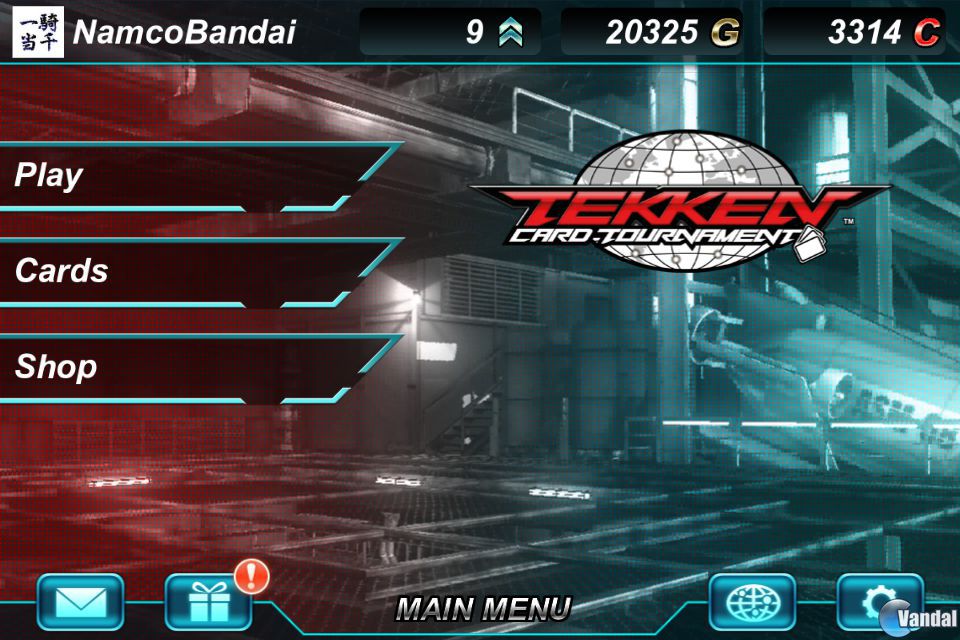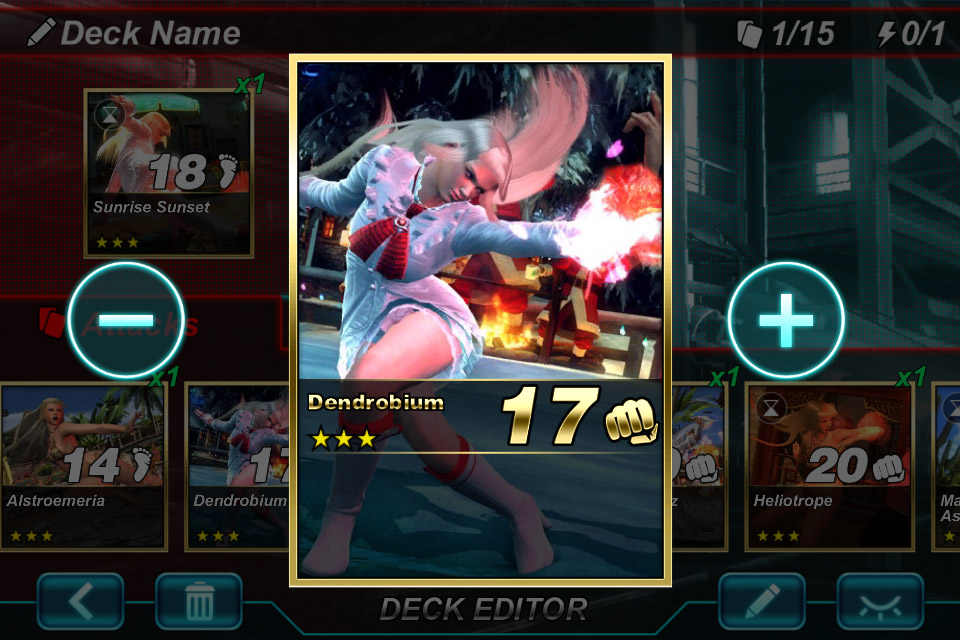


Paul and Panda rely mostly on brute strength, while Yoshimitsu hides his cards, Xiaoyu strikes light, fast, and often, and Law keeps opponents off-balance by neutralizing cards. While this can be accomplished by watching one of the movies (including the animated Tekken: Blood Vengeance and live-action Tekken), fans of Tekken Tag Tournament 1 or 2 will be familiar with each character’s playing style. For this, it helps to know a little bit about Tekken’s lore.

Like any other freemium card game, the currency to purchase booster packs can either be earned via playing the game or purchased with real cash through the Play Store.īuilding a deck requiresa bit of knowledge about the character’s strengths, weaknesses, and fighting styles. Building a balanced 15-card deck is essential to win, but no matter how good your deck is, playing the wrong move could cost you everything.įollowing the standard Magic: The Gathering model, a starter deck can initially be purchased for each character, followed by booster packs of varying card rarity. Each card represents a move, and after level 10, you can add cards from a tag partner. After a few hours, it becomes clear this game has the kinda chops it’ll take to compete in a post- Hearthstone freemium card category.įamiliar characters such as Law, Paul, Heihachi, Jin, Kazuya, and Yoshimitsu are represented in TCT with options to customize each deck and character. On the surface, Tekken Card Tournament is no different than any other Android card game looking to ruin a hardcore IP with yet another Mafia Wars clone. It may seem like simply another IP ported onto a moneymaking scheme a la Terrance and Phillip’s freemium game on South Park, but Tekken Card Tournament is actually a brilliant strategy game, worthy of comparisons to Magic, Pokémon, and other card game royalty. Now, Bandai Namco finally ported the balanced power system of Tekken to Android in the form of a card game. Tekken‘s intricate fighting system made each character unique, and eventually spawned an underground tournament scene.

Virtua Fighter, Soul Calibur, and Battle Arena Toshinden made early attempts at bringing the fighting genre to a 3D landscape, but it wasn’t until Tekken hit the block that we saw a smooth 3D fighting experience. The two-dimensional side-scrolling action pioneered by these legendary games hadn’t been veered from much. Street Fighter, the king of fighting games, was an arcade-style button masher whose only real competitor was the gore of Mortal Kombat. In 1995, Sony’s PlayStation console was still in its infancy when Namco ported one of the greatest fighting franchises of all time from the arcade – Tekken.


 0 kommentar(er)
0 kommentar(er)
